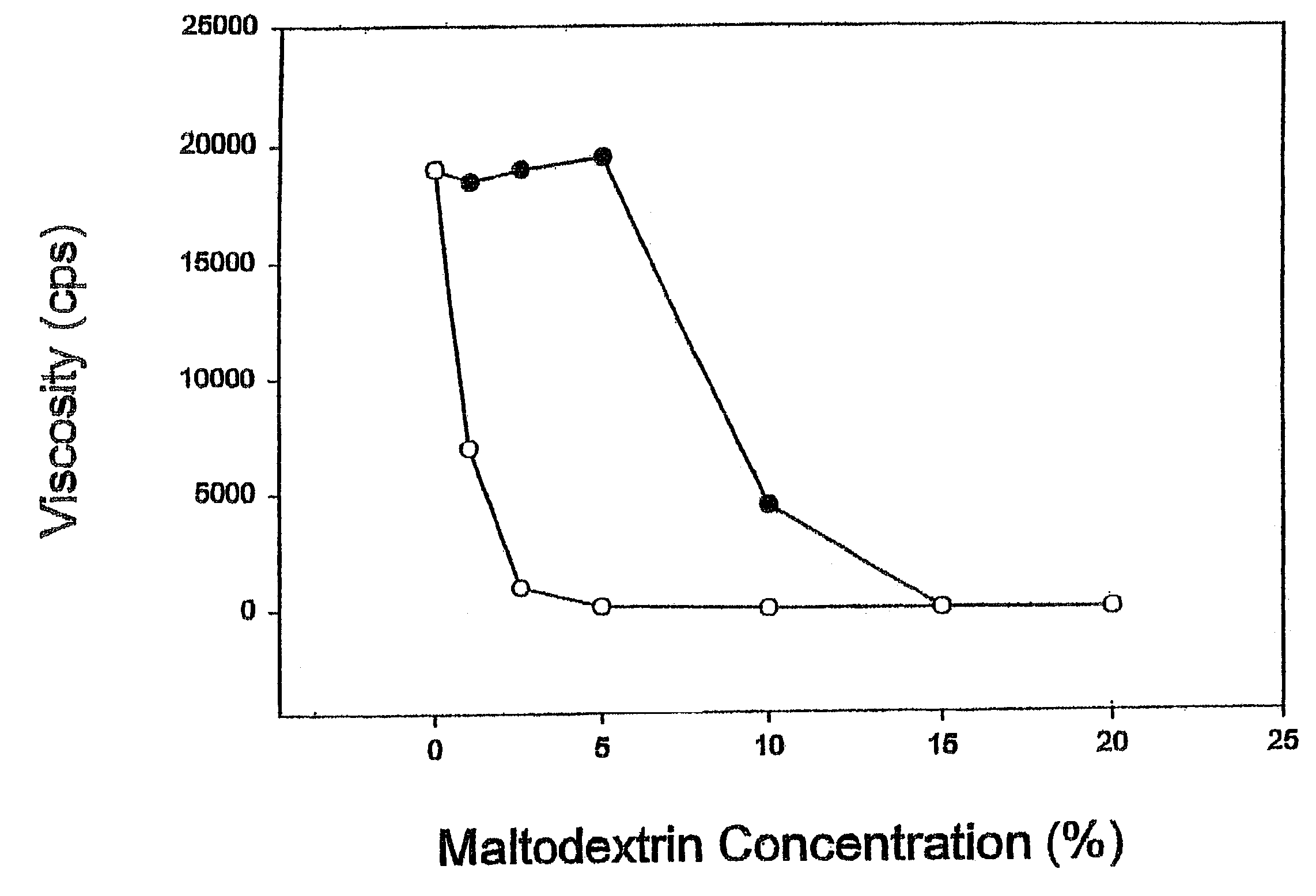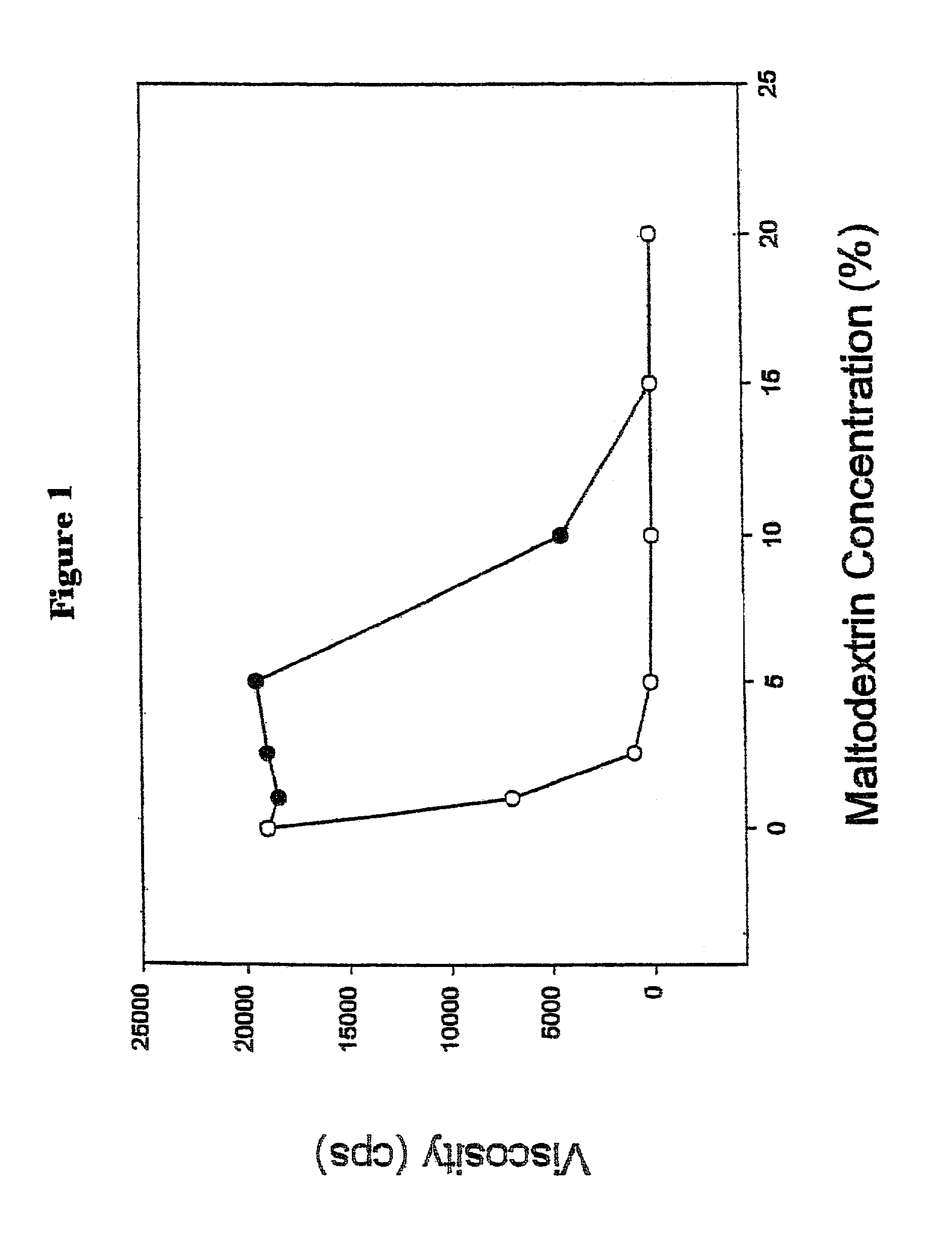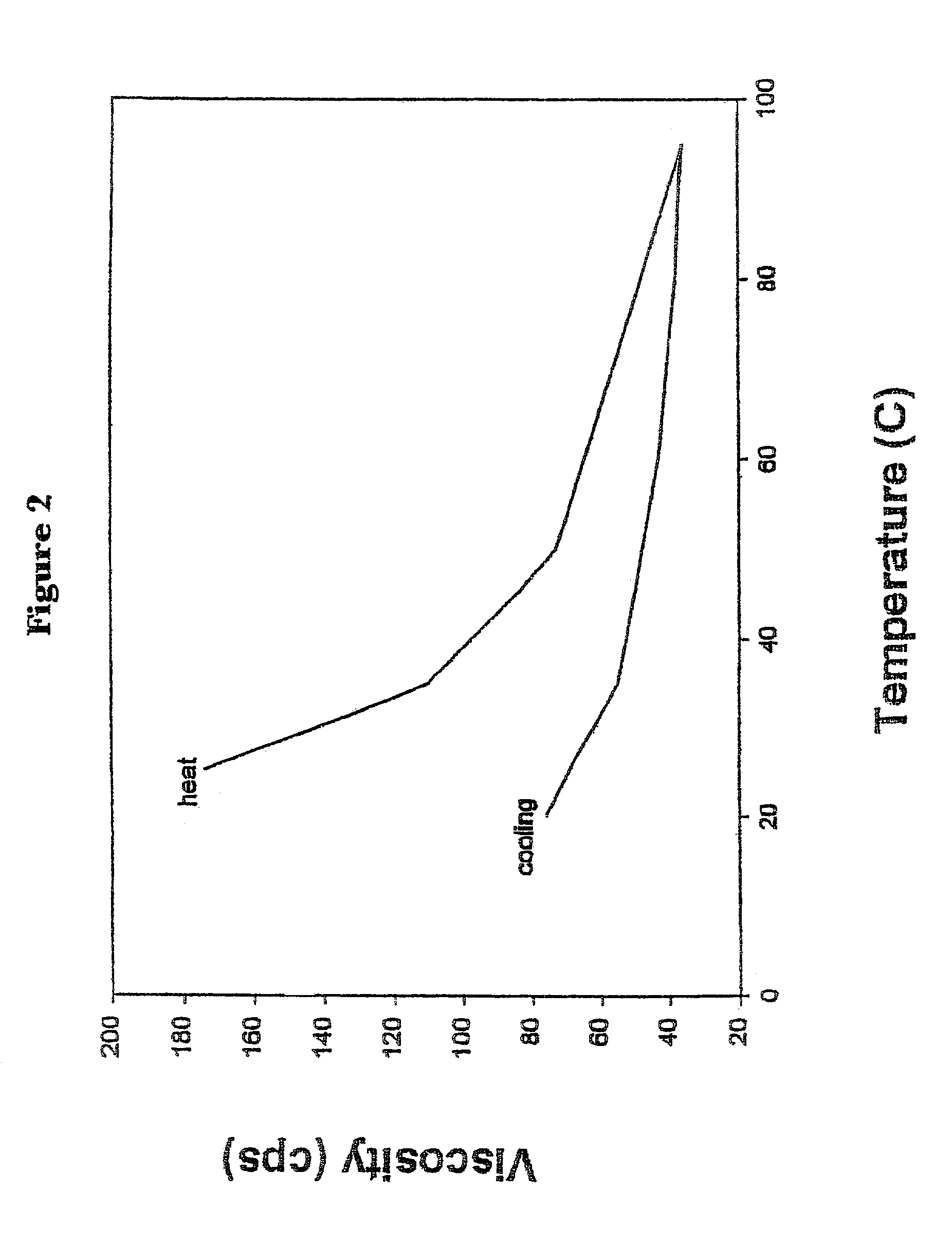Polymer controlled induced viscosity fiber system and uses thereof
- Summary
- Abstract
- Description
- Claims
- Application Information
AI Technical Summary
Benefits of technology
Problems solved by technology
Method used
Image
Examples
experiment 1
[0080]Initial experimentation involved the viscosity measurements of various levels of hydrolyzed maltodextrin in a 2% guar gum solution.
[0081]A 2% guar gum solution was prepared by dispersing the dry gum powder in water using a Waring blender at high speed for 30 seconds. The resulting mixture was allowed to rest for at least 4 hours to allow the entrained air to escape. Graded amounts of various maltodextrins were added to the vortex of a 2% guar gum solution in a Waring blender. The viscosities of the mixtures were measured using a Brookfield Viscometer (Model DV-II+) with a 62 spindle at room temperature immediately after the maltodextrins were dispersed.
[0082]The solubility of guar gum was depressed to varying degrees by the addition of maltodextrins as indicated by the decrease in viscosity in FIG. 1. The effectiveness of maltodextrins in reducing the viscosity of the guar gum solution was inversely correlated with the molecular weight of the maltodextrin. As seen in FIG. 1, 1...
experiment 2
[0083]The 10% DP 100 maltodextrin (Steer DR1 is a commercial DE1 maltodextrin from AE Staley Company) and 2% guar gum solution from Experiment 1 was heated to 95° C. and then allowed to cool to room temperature. The viscosity was monitored during the heating and cooling cycle using a Brookfield Viscometer (Model DV-II+) with a 62 spindle at room temperature (FIG. 2). The viscosity of the maltodextrin / guar gum dispersion was reduced from over 170 cpc to about 80 cps after heating and cooling to room temperature. Heat helped to drive the guar gum out of solution thereby decreasing the viscosity.
[0084]Twenty micro liters of bacterial alpha amylase (Sigma) was added to 250 gm of the maltodextrin / guar gum dispersion followed by shearing using a Glass-Col mixer for 30 minutes. The viscosity following shearing was measured using a Brookfield Viscometer (Model DV-II+) with a 62 spindle at room temperature. The viscosity of the maltodextrin / guar gum dispersion increased to over 14,000 cps af...
experiment 3
[0085]Maltodextrin (15% DP100) was added to various neutral gum solutions and the viscosities of the resultant mixtures were measured. Locust bean gum, Konjac flour, and methocel 2% solutions were prepared by dispersing the dry gum powder in water using a Waring blender at high speed for 30 seconds. The resulting mixtures were allowed to rest for at least 4 hours to allow the entrained air to escape. The viscosity of the mixtures were measured using a Brookfield Viscometer (Model DV-II+) with a 62 spindle at room temperature. The maltodextrin (15% DP100) was added to the vortex of each solution in a Waring blender. The viscosities of the mixtures were measured using a Brookfield Viscometer (Model DV-II+) with a 62 spindle at room temperature immediately after the maltodextrin was dispersed.
[0086]The addition of maltodextrin drastically reduced the viscosities of locust bean gum, konjac flour and methocel solutions. The viscosity of the locust bean gum solution dropped form 4000 cps ...
PUM
| Property | Measurement | Unit |
|---|---|---|
| Fraction | aaaaa | aaaaa |
| Fraction | aaaaa | aaaaa |
| Fraction | aaaaa | aaaaa |
Abstract
Description
Claims
Application Information
 Login to View More
Login to View More - R&D
- Intellectual Property
- Life Sciences
- Materials
- Tech Scout
- Unparalleled Data Quality
- Higher Quality Content
- 60% Fewer Hallucinations
Browse by: Latest US Patents, China's latest patents, Technical Efficacy Thesaurus, Application Domain, Technology Topic, Popular Technical Reports.
© 2025 PatSnap. All rights reserved.Legal|Privacy policy|Modern Slavery Act Transparency Statement|Sitemap|About US| Contact US: help@patsnap.com



